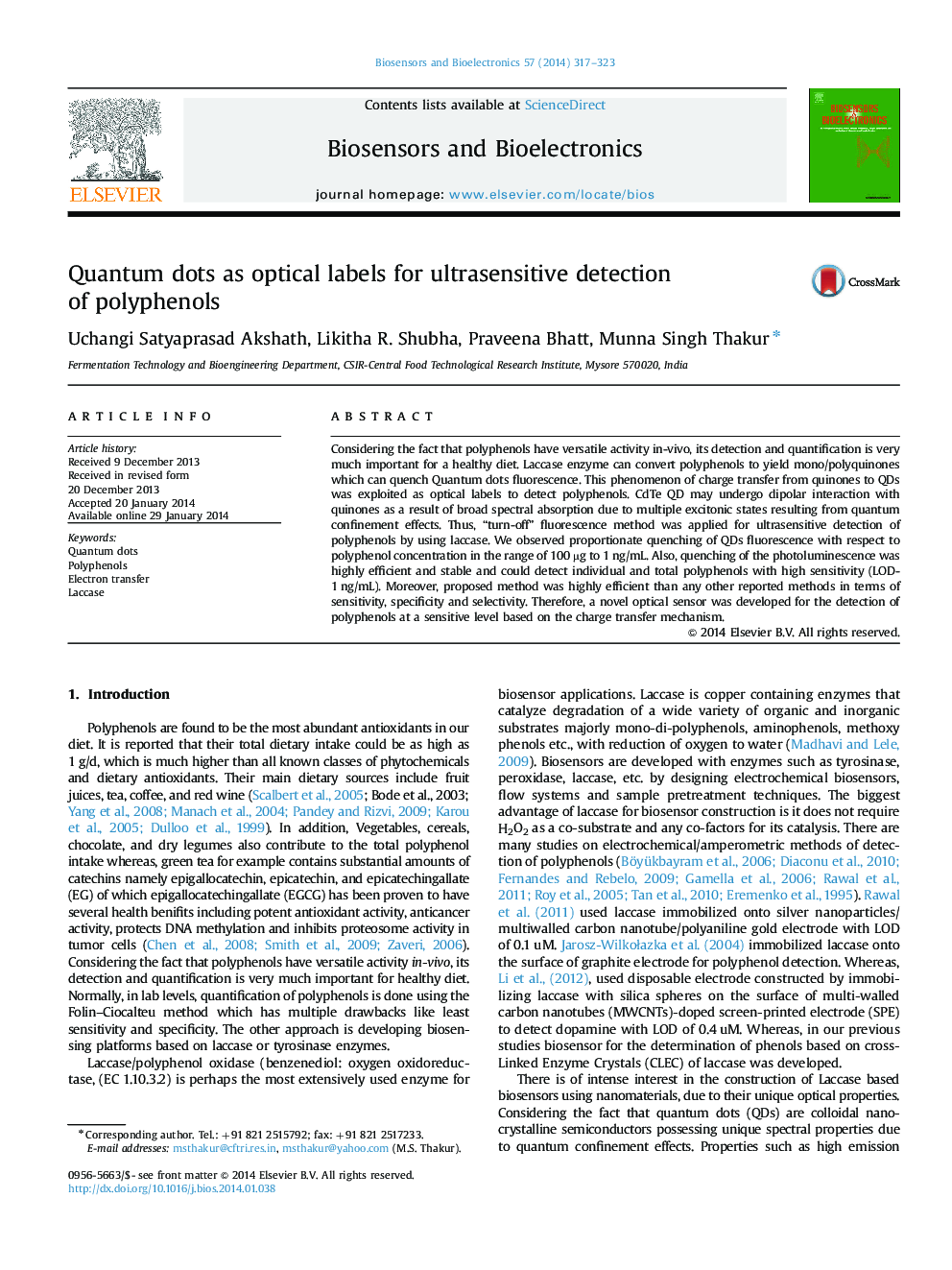| Article ID | Journal | Published Year | Pages | File Type |
|---|---|---|---|---|
| 7233617 | Biosensors and Bioelectronics | 2014 | 7 Pages |
Abstract
Considering the fact that polyphenols have versatile activity in-vivo, its detection and quantification is very much important for a healthy diet. Laccase enzyme can convert polyphenols to yield mono/polyquinones which can quench Quantum dots fluorescence. This phenomenon of charge transfer from quinones to QDs was exploited as optical labels to detect polyphenols. CdTe QD may undergo dipolar interaction with quinones as a result of broad spectral absorption due to multiple excitonic states resulting from quantum confinement effects. Thus, “turn-off” fluorescence method was applied for ultrasensitive detection of polyphenols by using laccase. We observed proportionate quenching of QDs fluorescence with respect to polyphenol concentration in the range of 100 µg to 1 ng/mL. Also, quenching of the photoluminescence was highly efficient and stable and could detect individual and total polyphenols with high sensitivity (LOD-1 ng/mL). Moreover, proposed method was highly efficient than any other reported methods in terms of sensitivity, specificity and selectivity. Therefore, a novel optical sensor was developed for the detection of polyphenols at a sensitive level based on the charge transfer mechanism.
Related Topics
Physical Sciences and Engineering
Chemistry
Analytical Chemistry
Authors
Uchangi Satyaprasad Akshath, Likitha R. Shubha, Praveena Bhatt, Munna Singh Thakur,
